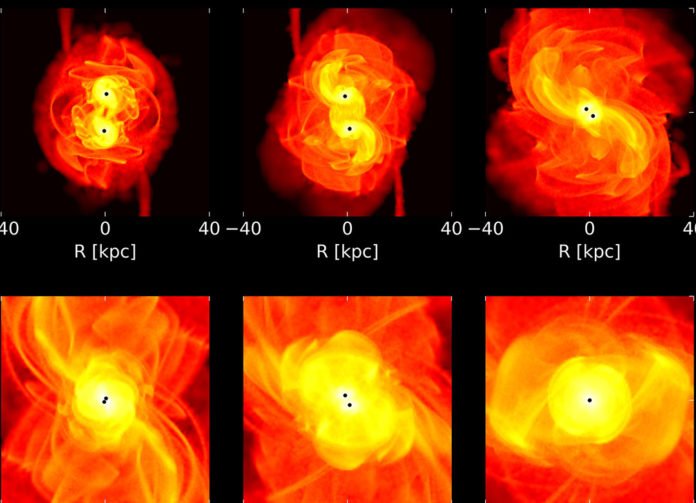Using Laser Interferometer Space Antenna (LISA), a team of astronomers at the University of Zurich have observed gravitational waves emitted by black holes. These shock waves occur when black holes impact or swallow one another. The LISA space project will comprise three space probes circling around the Sun in a consistent triangular formation and associated by laser beams.
In the event that gravitational waves go through the legs of the triangle, insignificant distortions of the laser beam occur, which are distinguished and recorded by the estimating gadgets. Therefore, LISA will give new bits of knowledge into the universe and help understand already undetectable wonders.
In collaboration with scientists from Greece and Canada, astronomers have that LISA will not only measure previously unexplored gravitational waves but also help fathom the mystery of dark matter.
Dark matter particles occupy 85 percent of the entire structure of the universe. But their existence remains hypothetical. However, estimations demonstrate that a considerable lot of self-rotating systems would be torn and separated in the event that they were not held together by much dark matter.
This is particularly valid for dark galaxies. These little galaxies are the most plentiful in the universe. This makes them astrophysicists into natural laboratories for the exploration of elusive dark matter.
Astronomers reported that the high-resolution computer simulations of Tomas Ramfal, a doctoral student at the Institute of Computational Science at the University of Zurich, provided surprising results on the birth of such dwarf galaxies.
The team calculated the interaction of dark matter, stars, and the central black holes inside the galaxies and found a strong association: The more black holes merge, the more prominent the measure of dark matter in the center of the dwarf galaxies. The gravitational waves produced by these merging holes could, in this way, likewise give clues to the nature of the hypothetical dark matter particles.
Lucio Mayer from the University of Zurich said, “This newly found connection between black holes and dark matter has now been mathematically described for the first time. This is no coincidence. Dark matter is characteristic of dwarf galaxies. We therefore long suspected that dark matter also has an important influence on the composition of the cosmos.”
The study comes when preparations for the final design of LISA are going all out. Along these lines, the LISA consortium got the main consequences of the simulations with great interest. The physics community sees this additional benefit of gravitational wave observation by LISA as a promising prospect for one of the largest future European space missions to start in about 15 years: It could combine cosmology and particle physics – from the incredibly large to the unimaginably small.
The study is published in the Astrophysical Journal Letters.
